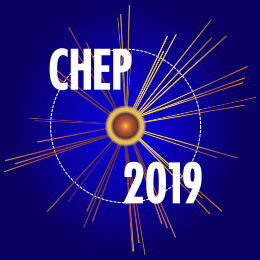Speaker
Description
The Deep Underground Neutrino Experiment (DUNE) is an international effort to build the next-generation neutrino observatory to answer fundamental questions about the nature of elementary particles and their role in the universe. Integral to DUNE is the process of reconstruction, where the raw data from Liquid Argon Time Projection Chambers (LArTPC) are transformed into products that can be used for physics analysis. Experimental data is currently obtained from a prototype of DUNE (ProtoDUNE) that is built as a full scale engineering prototype and uses a beam of charged particles, rather than a neutrino beam to test the detector response. The reconstruction software consumes on average 35% of the computational resources in Fermilab. For DUNE it is expected that reconstruction will play a far greater, and computationally more expensive role, as signal activity will be significantly reduced upon deployment of the neutrino beam. Consequently, identifying signals within the raw data will be a much harder task. Alternative approaches to neutrino signal reconstruction must be investigated in anticipation of DUNE. Machine learning approaches for reconstruction are being investigated, but currently, no end-to-end solution exists. As part of an end-to-end reconstruction solution, we propose an approach using Graph Neural Networks (GNN) to identify signals (i.e. hits) within the raw data. In particular, since the raw data of LarTPCs are both spatial and temporal in nature, Graph Spatial-Temporal Networks (GSTNs), capable of capturing dependency relationships among hits, are promising models. Our solution can be deployed for both online (trigger-level) and offline reconstruction. In this work, we describe the methodology of GNNs (and GSTNs in particular) for neutrino signal reconstruction and the preliminary results.
| Consider for promotion | No |
|---|
